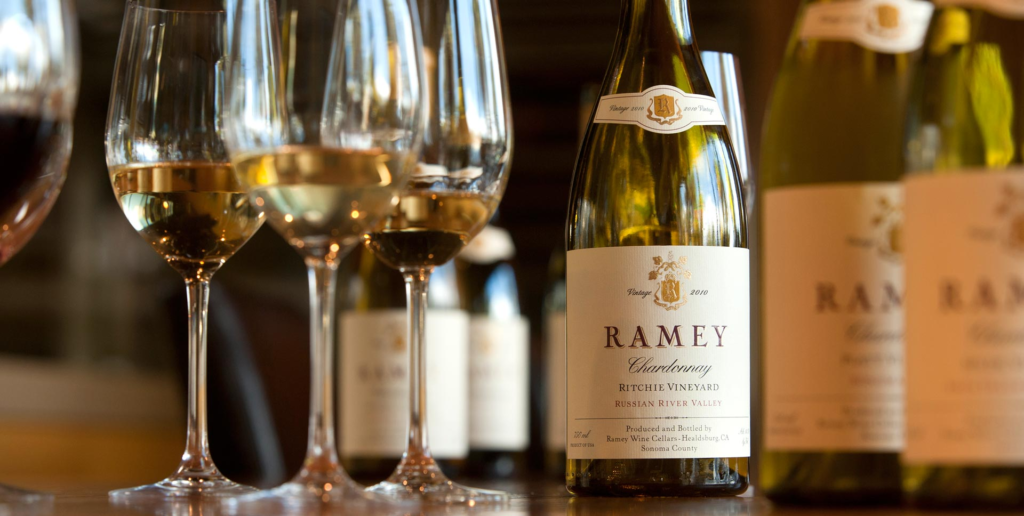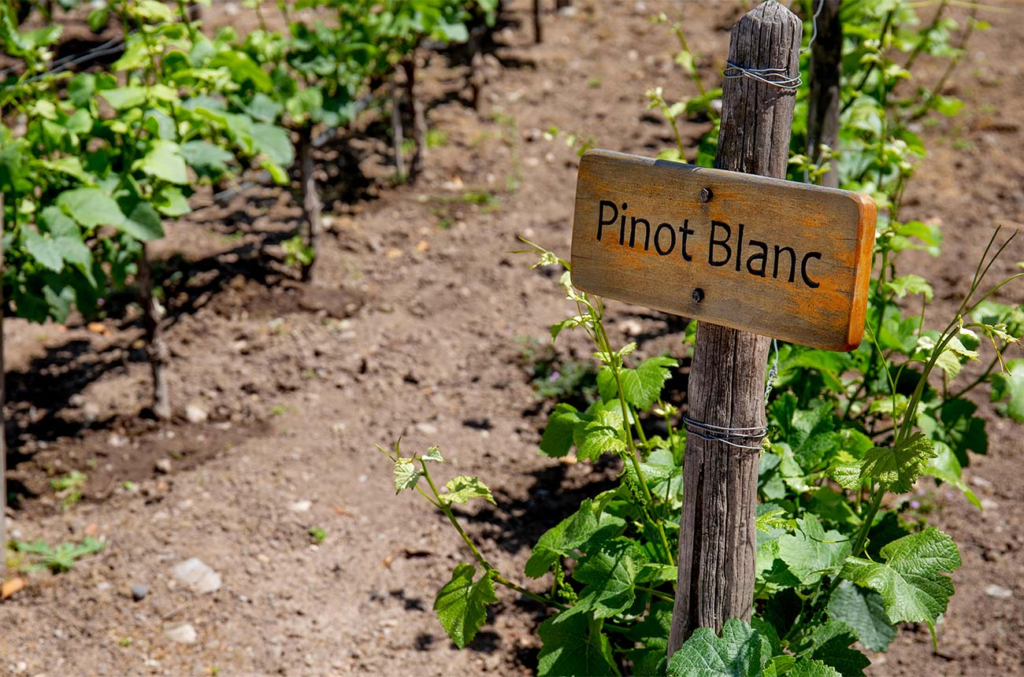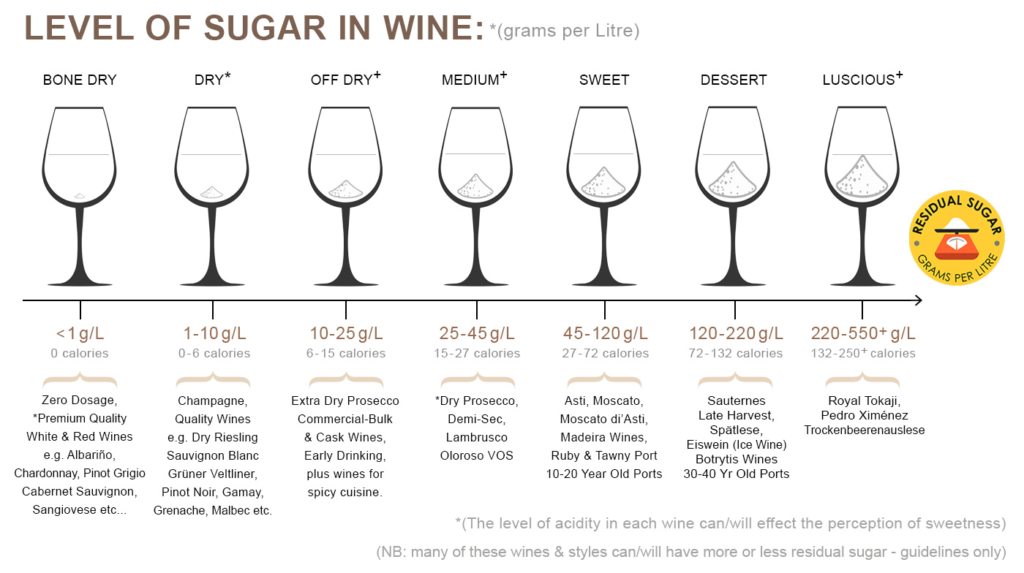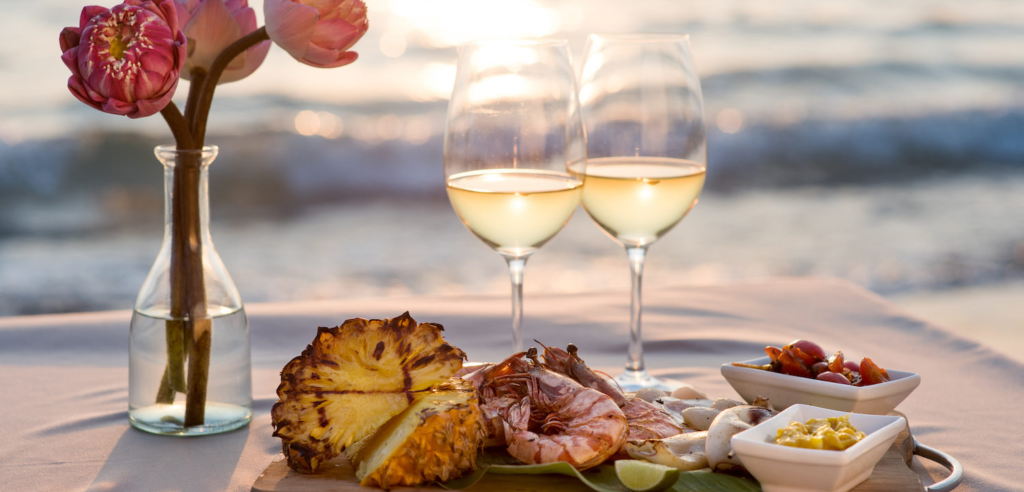When the term “dry white wine” is used, it might conjure images of a warm summer day, a cool glass in hand, with an accompaniment of a delicate seafood dish. You may think of crisp, tangy Sauvignon Blanc from New Zealand, or perhaps a rich, full-bodied oaked Chardonnay from California. Maybe even the often underrated, yet delightfully mineral-driven Chenin Blanc from the Loire Valley in France. Whether you’re looking to expand your palate, seeking the ideal wine for a chicken dish or eager to explore the intricacies of wine pairing, this guide will offer an extensive look into the nuanced world of dry white wine. Let’s embark on this wine journey together!
Defining Dry Wine
So, what then, makes a white wine dry? The term “dry” in the wine world refers to wines that aren’t sweet, but to truly understand this concept, one needs to look at the wine-making process. During fermentation, yeasts consume and convert sugar in the grape juice into alcohol. In a dry wine, this fermentation process is allowed to run its course until nearly “all the sugar” is consumed, resulting in a wine with minimal residual sugar and hence, less inherent sweetness. This lack of sweetness is what earns a wine the classification of “dry”.
Understanding this balance between sugar and alcohol is key to making sense of wine classifications, and as we progress, you’ll discover that the world of dry white wines is as varied and complex as the wine world itself. Whether bone dry or off-dry, there is a wealth of flavor, aroma, and texture to be found in these wines. So, let’s dive into the details and start exploring the amazing varieties of dry white wine.
12 Popular White Wines
- Kim Crawford Sauvignon Blanc (New Zealand): This wine offers intense flavors of passion fruit and tropical fruit, balanced by a lively acidity, making it a refreshing and vibrant choice.
- Santa Margherita Pinot Grigio (Italy): Renowned for its crisp, clean flavors of green apple, peach, and lime, this wine is characterized by its bright acidity and mineral undertones.
- Château de Sancerre (France): This classic Sauvignon Blanc from Loire Valley is dry, crisp, and carries delicate notes of bell pepper and citrus, with a subtly flinty minerality.
- Domaine Zind-Humbrecht Pinot Gris (France): A rich and full-bodied wine with notes of stone fruit and honey, supported by vibrant acidity and a hint of sweetness.
- King Estate Pinot Gris (USA): From Oregon, this wine offers a harmonious blend of pear, apple, and melon flavors, with a touch of spice and a crisp finish.
- Cloudy Bay Sauvignon Blanc (New Zealand): Well-known for its expressive fruit flavors, including passion fruit, lime, and gooseberry, it’s balanced by a refreshing acidity and an underlying minerality.
- Grgich Hills Chardonnay (USA): An elegant, full-bodied Chardonnay from Napa Valley, displaying rich flavors of tropical fruit, apple, and honey, with well-integrated oak influence.
- The Four Graces Pinot Blanc (USA): This Oregon wine is light-bodied yet creamy, with notes of green apple, lemon, and white flowers, finishing with a crisp, clean acidity.
- Jermann Pinot Grigio (Italy): From Northern Italy, this Pinot Grigio offers a harmonious blend of stone fruit and citrus notes, with a hint of almond on the finish.
- Pascal Jolivet Pouilly-Fumé (France): A beautiful example of Loire Valley Sauvignon Blanc, offering flinty mineral notes combined with citrus and green apple, resulting in a wine that is both complex and refreshing.
- Tablas Creek Vineyard Grenache Blanc (USA): This Californian white brings together flavors of green apple, white flowers, and a touch of spice, all underlined by a pleasing minerality.
- Château de Montfort Vouvray (France): Made from Chenin Blanc grapes, this wine is off-dry, with balanced acidity and delightful notes of honey, apple, and a hint of minerality.
Varieties of Dry White Wine
Sauvignon Blanc
One of the most recognized dry white wines, Sauvignon Blanc, is renowned for its crisp acidity and vibrant fruit flavors. Originating from the Bordeaux region of France, this grape variety now thrives in various climates across the globe. Sauvignon Blanc from cooler regions often displays green notes, such as bell pepper and grass, along with bright citrus notes. In contrast, those from warmer regions may exhibit flavors of tropical fruit like passion fruit and ripe melon.
Chardonnay

Often seen as the queen of white wine grapes, Chardonnay is incredibly versatile, producing a wide range of wine styles, from lean and mineral to rich and buttery. Unoaked Chardonnay, such as those from Chablis in northern France, is often bone dry, displaying citrus, green apple, and mineral notes. Oaked Chardonnay, like those from California or southern France, often goes through malolactic fermentation, lending the wine a rich, creamy texture with flavors of tropical fruit, butter, and vanilla.
Pinot Grigio/Pinot Gris
Here’s where a grape shows its versatile nature. Known as Pinot Grigio in Italy and Pinot Gris in France, this variety can produce both sweet and dry white wines. Italian Pinot Grigio, especially from the cooler northern regions, is typically dry, light-bodied, and has crisp acidity with flavors of pear, lime, white flowers, and almonds. The Pinot Gris of Alsace, France, on the other hand, is fuller-bodied and richer, often displaying a touch of sweetness and flavors of stone fruit, honey, and spice.
Chenin Blanc
Chenin Blanc is a high-acid white grape variety that’s incredibly versatile. It’s known for producing everything from bone dry to sweet wines, as well as sparkling wines. When made as a dry white wine, often in the Loire Valley in France or in South Africa, Chenin Blanc can show flavors of quince, apple, and white flowers with distinctive mineral notes and crisp acidity.
Grenache Blanc
Often overshadowed by its red counterpart Grenache Noir, Grenache Blanc is a white grape variety that typically produces dry wines with high alcohol content and low acidity. Originating in northern Spain, it’s now found across the world, particularly in southern France. Grenache Blanc wines often have flavors of green apple, pear, and citrus, with herbaceous and mineral undertones.
Melon de Bourgogne
This grape, also known as Muscadet, is grown in the western end of the Loire Valley. It’s best known for producing the bone-dry, light-bodied, and subtly flavored Melon de Bourgogne wines. These wines often display notes of green apple, citrus, and a distinctive salty mineral quality that makes them a perfect pairing for oysters and other shellfish.
Pinot Blanc

Pinot Blanc, a genetic mutation of Pinot Noir, produces light to medium-bodied dry white wines. It’s most commonly found in Alsace, where it can make wines with apple, pear, and floral flavors, accompanied by high acidity and some mineral quality. It’s also found in Italy, where it’s known as Pinot Bianco and often has a bit more body and richness.
By exploring these and other varieties of dry white wine, wine drinkers can develop a deeper appreciation for the complex range of flavors, textures, and styles this category has to offer.
In the next section, we’ll take a closer look at food pairings, and how the flavors in dry white wine can be beautifully accentuated when matched with the right dishes.
Choosing a Good Bottle
The world of wine can often feel overwhelming, with countless varieties and regions to choose from. However, with a few simple tips, you can navigate this vast sea of options and find a bottle that suits your tastes.
Firstly, it’s important to understand that price isn’t always an indicator of quality. Many affordable wines are also of high quality, especially when it comes to dry white wines. You don’t have to break the bank to enjoy a good glass of wine.
Check the Alcohol Content
The level of alcohol in a wine can give you an idea of its sweetness. Wines with an alcohol content of 10% or lower are likely to be sweeter, while those with an alcohol content of 11-12% are likely to be medium-dry, and wines of 13% or more are likely to be dry. This is because the yeast consumes the grape sugar during fermentation, producing alcohol. The more sugar the yeast consumes, the higher the alcohol content and the drier the wine.
Learn About the Grape Varietal
Certain grape varieties tend to produce drier wines. Sauvignon Blanc, Chardonnay, Pinot Grigio/Pinot Gris, Chenin Blanc, Grenache Blanc, Melon de Bourgogne, and Pinot Blanc are all varieties that are typically used to produce dry white wines. Learning a little about the characteristics of these grape varieties can help guide your choice.
Research the Wine Region
Certain wine regions are known for producing dry white wines. For instance, the Loire Valley in France, Marlborough in New Zealand, and Alto Adige in Italy are all regions known for their dry white wines.
Ask for Advice
Don’t be afraid to ask for recommendations, whether you’re in a wine store or a restaurant. Wine professionals are usually passionate about sharing their knowledge and can guide you towards a bottle that suits your tastes and your budget.
The Science behind Dry White Wines
Understanding Residual Sugar

Residual sugar—often abbreviated as RS—is a term you’ll frequently encounter when discussing the dryness or sweetness of a wine. Residual sugar is the amount of sugar remaining in the wine after the fermentation process has ended. In a very dry white wine, the yeast will have consumed almost all the sugar during fermentation, resulting in very low residual sugar content.
A wine with less than one percent of residual sugar is typically considered dry. Wines with residual sugar levels between 1% and 3% are often classified as off-dry, offering a hint of sweetness that can add depth and complexity to the wine’s profile. It’s important to note, however, that the perception of sweetness can also be affected by other elements in the wine, such as acidity and alcohol content. For example, a high-acid wine can mask the presence of residual sugar, making the wine taste drier than its sugar content might suggest.
The Fermentation Process
In the context of winemaking, fermentation is the process by which yeast consumes the sugar in grape juice, producing alcohol and carbon dioxide. For a wine to be classified as dry, the yeast needs to consume “all the sugar” available during fermentation. If fermentation is stopped before all the sugar is consumed—either by dropping the temperature or adding sulfur dioxide—the resulting wine will have higher levels of residual sugar and will therefore be sweeter.
The yeast’s role in this process can’t be overstated; these microscopic organisms are the unseen heroes of winemaking, transforming grape juice into the complex, captivating beverage we know and love. It’s their appetite for sugar that ultimately determines whether a wine will be sweet, off-dry, or dry.
Understanding “Off Dry”
If you’re new to the world of wine, the term “off dry” might seem a bit confusing. Off dry is a term used to describe wines that have a slight sweetness to them, usually because not all the sugar in the grape juice was consumed during fermentation. This category sits between dry and semi-sweet wines.
Off dry wines often strike a delightful balance, offering just a touch of sweetness that can make them more approachable to those who find bone dry wines too austere. They can also serve as a gateway into the world of dry wines, offering a stepping stone from sweeter styles towards more dry options.
Tasting Dry White Wine Like a Pro

Whether you’re a seasoned wine drinker or a novice, understanding how to taste wine can enhance your appreciation and enjoyment of this complex beverage. By learning to identify the different elements of a wine, you can more accurately communicate your preferences and discover new wines to enjoy.
Look
Start by examining the wine’s appearance. Its color can give you clues about its age and grape varietal. Younger white wines usually have a pale, straw-like color, while older ones may be more golden or amber.
Swirl
Swirling the wine in the glass helps to release its aromas. Watch how the wine runs back down the sides of the glass after swirling; wines that leave what’s known as ‘legs’ or ‘tears’ may have higher sugar or alcohol content.
Smell
Take a moment to inhale the wine’s aromas. Dry white wines can exhibit a range of aromas, from citrus and green apple to tropical fruits like passion fruit and stone fruits. Some may also have floral notes, such as white flowers, or mineral notes, suggestive of the wine’s terroir.
Taste
Take a small sip and let the wine move around all parts of your mouth before swallowing or spitting it out. Here, you’re looking for the balance between the wine’s sweetness, acidity, alcohol, and any tannins it may have. Pay attention to the flavors you can identify. Dry white wines can have a wide range of flavor notes, including citrus, stone fruit, tropical fruit, green apple, and bell pepper, among others.
Consider
Reflect on the wine’s finish, which is how long the flavors linger after swallowing. Did the wine feel light or full-bodied? Was it crisp and refreshing, or rich and complex?
When tasting, don’t worry if you can’t identify specific flavors right away. This comes with practice. The most important thing is to pay attention to what you like and don’t like.
Food Pairing with Dry White Wines

Pairing food with wine can seem like an art form, but with a few basic principles, it becomes a lot more accessible. Dry white wines are exceptionally versatile at the table, pairing well with a wide variety of dishes. Let’s explore some common pairings.
Sauvignon Blanc
With its high acidity and citrus notes, Sauvignon Blanc is a natural match for lighter dishes, particularly those featuring seafood or chicken. Its grassy and green bell pepper notes make it a perfect accompaniment for salads or dishes with herbs. Sauvignon Blanc is also one of the few wines that can pair well with difficult ingredients like asparagus and artichokes, thanks to its herbaceous qualities.
Chardonnay
The food pairing for Chardonnay will depend largely on whether it’s oaked or unoaked. Oaked Chardonnay, with its richer, buttery profile and flavors of tropical fruit, pairs wonderfully with dishes that have a cream sauce, such as chicken or pasta. Unoaked Chardonnay, lighter and with a crisper acidity, goes well with simple grilled fish or chicken dishes.
Pinot Grigio/Pinot Gris
The light and crisp Italian Pinot Grigio pairs beautifully with light fish or chicken dishes, as well as salads. The slightly sweeter and fuller-bodied Pinot Gris from Alsace can stand up to slightly heavier dishes, such as pork, or slightly sweet and spicy Asian cuisine.
Chenin Blanc
Chenin Blanc, with its high acidity and versatility, pairs well with a wide variety of dishes, from chicken to seafood. If your Chenin Blanc has a slight sweetness, it can also pair wonderfully with spicy food, as the sweetness can balance out the heat.
Grenache Blanc
The full-bodied Grenache Blanc goes well with slightly richer dishes, such as pork, creamy sauces, or richer fish like salmon. Its herbaceous notes also make it a good match for dishes with fresh herbs.
Melon de Bourgogne
Given its home on the coast of the Loire Valley, it’s no surprise that Melon de Bourgogne is a perfect match for seafood, particularly shellfish. Its high acidity and mineral notes make it an excellent match for raw oysters.
Pinot Blanc
The high acidity and light to medium body of Pinot Blanc makes it a versatile food wine. It pairs well with a range of dishes, from poultry to seafood, and can also stand up to slightly richer sauces or creamy dishes.
In the end, the best pairing is one that brings you joy. Don’t be afraid to experiment with different combinations of food and wine — you might discover a new favorite match. In the next section, we’ll tackle how to use dry white wine in cooking, opening a whole new avenue of flavor in your culinary adventures.
FAQs
What is the driest white wine?
The driest white wines are those that have the least residual sugar left after fermentation. This includes many Sauvignon Blancs, especially those from the Loire Valley in France, and some versions of Chardonnay, particularly those made in a traditional style without malolactic fermentation.
Which white wines are dry?
Many types of white wine can be dry, depending on how they are made. Examples include Sauvignon Blanc, Chardonnay, Pinot Grigio (also called Pinot Gris), Albariño, and Vermentino. However, within each type, there can be variations in dryness, so it’s always a good idea to check the wine’s specific tasting notes or ask the seller.
What is a good very dry white wine?
A good very dry white wine depends on personal preferences, but many wine enthusiasts recommend the Sancerre or Pouilly-Fumé from the Loire Valley in France, both of which are Sauvignon Blancs known for their extremely low residual sugar and high acidity.
Which white wine is drier, Pinot Grigio or Sauvignon Blanc?
Both Pinot Grigio and Sauvignon Blanc can be very dry, but typically, Sauvignon Blanc is often perceived as drier due to its high acidity levels, especially those from cooler climates like the Loire Valley or New Zealand.
What does ‘dry’ mean in dry white wine?
‘Dry’ in the context of white wine refers to the absence or low levels of residual sugar left in the wine after fermentation. The term doesn’t refer to the flavor but rather the sweetness. A dry wine will have very little to no perceptible sweetness.

